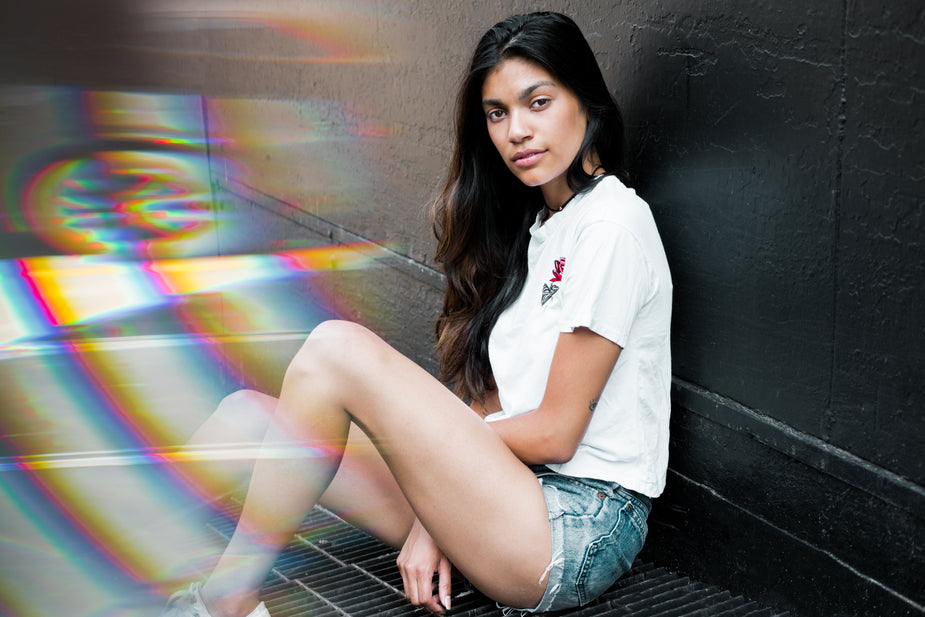In today’s social media marketing world, working with influencers is a very effective way to make an impact. However, there is no single way to determine which influencers to work with. After all, influencer marketing drives a great ROI.
Most marketers find it effective in increasing a good volume of traffic to their sites. 71% say that it helps them achieve that goal. However, there is no universal answer for determining which influencers to work with.
Although you may be tempted to believe that an influencer’s number of followers determines its success, smaller micro-influencers can serve brands more effectively than celebrities.
By knowing which types of influencers work best for your business, you can produce good-quality content that helps enhance your business.
Here are some things you should know about micro and macro-influencers.
Micro-influencers: who are they?
Micro-influencers typically have an audience of 1000-100,000. Small audiences may seem challenging at first, but their experiences have proven otherwise. Although micro-influencers have fewer Instagram followers than macro-influencers, their content is typically more engaging as they are approachable and relatable. These influencers seem to favor content that receives more comments and likes.
Most micro-influencers have a niche audience. Their followers share the same interest and are dealing with the same problem. By using micro-influencers, you can make sure the right audience sees your message.
Research suggests micro-influencers convert at a higher rate than macro-influencers. Influencer campaigns aren’t new to micro-influencers. However, since they are less popular, you can quickly create a campaign.
Nano influencers can produce quality content despite their limited reach, even if their following is less than 1,000. Brands must do due diligence to ensure that nano influencers can create quality content, even if they’re willing to do so for free.
Macro influencers: what are they?
Macro-influencers have between 100,000 and a million followers. As a rule, they aren’t celebrities. They are thought-leaders or experts in niches. Imagine your favorite TikTok creator or fashion or travel blogger.
Several major brands have used micro-influencers in influencer marketing campaigns due to their high popularity, making it easy for them to post high-quality content on Instagram.
Having a large audience is extremely useful for brand awareness, but keep in mind that not every follower of an influencer will see a single post. Only 2% of their followers may see it with a larger audience.
Beyond macro-influencers, there are mega influencers with more than 1 million fans on Instagram. So far, there are just traditional celebrities. Often, these individuals are booked for big-time brands with big-time budgets, but sometimes they are still willing to do sponsored posts.
When following macro and mega influencers, you need to be aware of fake followers. Influencers may have a lot of fake followers if they either receive very few comments on their posts or if they all sound generic. Sponsored posts have typically been more expensive for influencers who buy followers or use bots because their posts seem more popular.
Micro vs Macro Influencers
With micro-and macro-influencers, your marketing campaigns can generate a maximum return on investment. Let’s compare the two.
- Engagement
Micro-influencers generate engagement 7 times faster than macro-influencers, according to a study by SocialPubli. Even when they post sponsored content, their viewers are likely to engage on a deeper level than macro-influencers who have a lot of followers. A study by Statista found that social media influencers with less than 1,000 followers get 5% of likes on their posts, while those with more than 10 million followers receive only 1.6% on average.

- Reach
As compared with macro-influencers, micro-influencers do not have a huge audience. Although micro-influencers may have decent followings, their social media reach is smaller. Mavrck defines macro-influencers as people with 100,000-1 million followers, while micro-influencers have 500-10,000 followers. Micro-influencers may have fewer than 100K followers or as many as 50,000-100,000 followers. These individuals can reach hundreds of thousands of people at the same time. An individual social media post can reach a large audience with a brand’s message. A macro-influencer may not reach as many people as many micro-influencers, so they may be more effective in boosting brand awareness and visibility.
- Affordability
Even though macro-influencers have high reach levels, they are expensive and often out of reach for small businesses. As quoted by The New York Times, YouTube videos made by influencers with followings of 3-7M cost $187,500. Influencers charge around $75,000 per Instagram post and slightly more for Snapchat posts. Mega-influencers charge much more than those with more than 500,000 followers.
- Relevance
Micro-influencers may improve influencer marketing campaigns since they can reach highly relevant audiences. They are usually experts in the field, including beauty bloggers, fashion bloggers, fitness Instagrammers, and gamers. They are more likely to convert because they cover exciting topics and generate more qualified leads than macro-influencers, whereas macro-influencers may also be subject matter experts or celebrities. The products and services they advertise are not suited to their expertise and niches.
A restaurant owner should use food domain influencers to reach its target audience. As an example, a restaurant owner may not want to hire macro-influencers to market their business because they aren’t relevant. Therefore, the restaurant owner should consider hiring a foodie micro-influencer. In addition, since this is a restaurant, the owner needs to partner with local influencers to attract customers.
Micro-influencers: Costs of using them!
Budgets for influencer marketing increase every year, and there are no signs that this trend will slow. Influencers can be paid in many ways depending on the campaign, engagement level, and audience size. If you are hesitant to work with influencers, consider brand ambassadors, which can be less expensive than working with macro-influencers.
Influencer marketing is expensive. Micro-influencers can be paid well if you share your products with them in exchange for their posts. Brand ambassadors will not post as much because they are only receiving free products. For high-quality influencers, it is common to charge $100 per 10,000 followers. That’s a huge range; it depends on your industry, campaign, and influencers. Considering 63% of marketers plan to increase their influencer budgets next year, it’s clear influencers are worth it.
When micro-influencers collaborate with brands they admire or with valuable products, the cost may be lower. Micro-influencers also make things easier than macro-influencers because you can negotiate via DM and email. In contrast, macro-influencers may require you to speak multiple times over the phone and by email.
Macro-influencers: Costs of using them!
In short, micro-influencers are more cost-effective than macro-influencers. Money, resources, and products all contribute to this cost. If you want to save money, hire a micro-influencer, but don’t be surprised by the price tag.
If you partner with an influencer marketing network, you won’t have to deal with macro-influencers. Over time, the partnership becomes more time- and money-consuming. Getting a macro-influencer to write a post can cost anywhere from $5,000 – $10,000.
Pros of using micro-influencers for your campaign!
- Genuine engagement – A micro-influencer engagement with their audience is typically genuine. Content that resonates with their audiences is a valuable resource for them. An authentic micro-influencer post is more likely to generate likes and comments than a macro-influencer post. Authenticity can also help micro-influencers drive sales since their audience feels strongly connected and invested in them.
- Building brand ambassadors – Micro-influencers can serve as brand ambassadors, a low-cost way to test if they can accurately represent your brand and product attributes. Before becoming macro-influencers, they were micro-influencers. A brand ambassador program also provides a low entry barrier since you can give away a few pieces of content in return for a discount code or product.
- ROI is higher with micro-influencers – Macro-influencers are significantly more expensive than micro-influencers.
Pros of using macro-influencers for your influencer marketing campaign
- A wider audience – Most macro-influencers are more widely recognized than micro-influencers. Their extended reach comes from the number of followers they have.
- Accelerating sales – Taking advantage of influencer marketing can be beneficial for driving sales even though it does not guarantee sales. Working with a macro-influencer with more than one title can be very beneficial for driving sales. Your product, sales, logistics, and eCommerce teams will all have to help you with this.
- Their influence can be significant – You can gain instant credibility for your product by using a key opinion leader. Influencer marketing is usually used to market high-cost items, health products, and sensitive topics. When a brand partners with a key opinion leader, it establishes credibility and proves its ability to deliver. However, the key opinion leaders use their influence and leverage to justify the high price of the collaboration.
Why is it more profitable to use Micro-influencers – thought process behind this?
An influencer marketing team of micro-influencers is essential to a successful campaign. Micro-influencers are more accessible, cost-effective, and easier to recruit than macro-influencers.
- Cost-effective – A low upfront cost is ensured through product trading and collaboration.
- Efficient CPM – With micro-influencers, you can get a high ROI of several hundred dollars and a low cost per thousand impressions than with more traditional digital advertising methods (Facebook, Instagram, Google, etc.). You can also extend your influencer marketing budget by working with micro-influencers.
- Work With Ease – Micro-influencers are frequently focused on building their followings and collaborating with more brands, while macro-influencers are generally more selective.
Wrap up!
Influencer marketing is a great way to drive traffic to your website. While macro-influencers may be a viable option, we recommend sticking with micro-influencers because of their scalability, price, and convenience.




